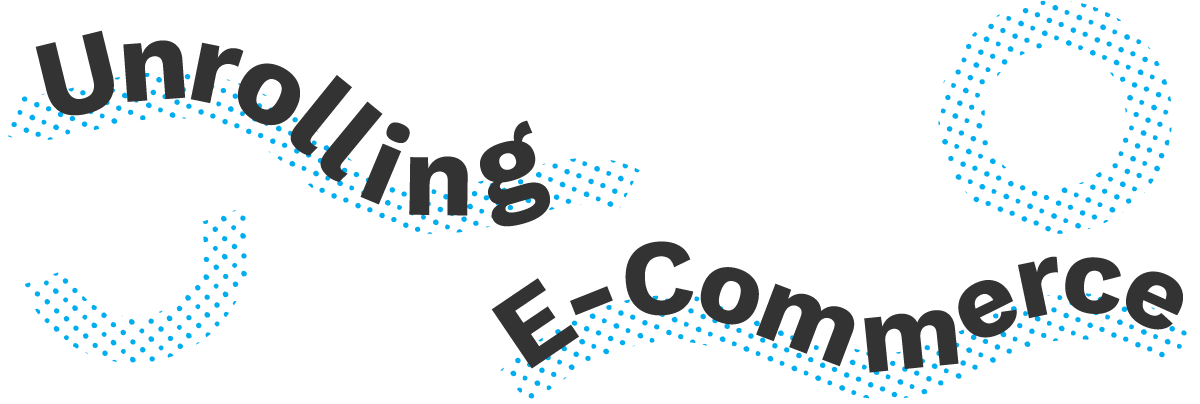

How Ambitious Brands Do Content Marketing
Subscribe
Episode Guests
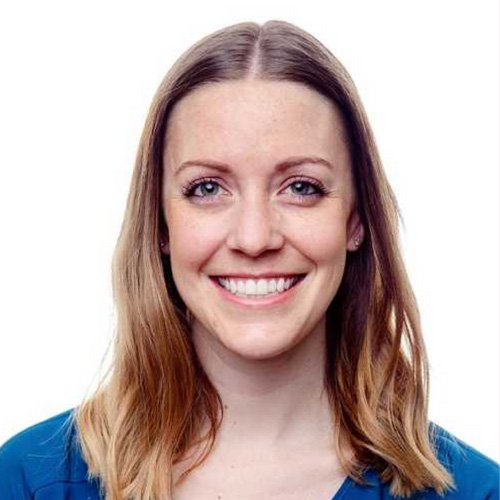
Kristen Anderson
Kristen is a product leader in consumer FinTech and banking integration. She co-founded Catch, a Y Combinator-backed startup combining savings, investment, and insurance for those without access to employer benefits. Early in her career, she worked with Commonwealth to design and scale innovative savings products that now serve more than 80 million consumers. Kristen also helped launch one of the first student loan repayment SaaS benefits platforms.
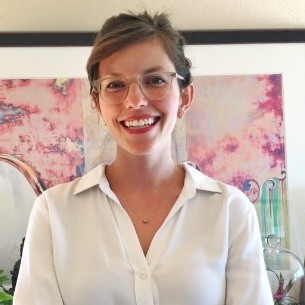
Renée Christensen
Marketing Director at Léon & George
Léon & George make it easy to bring beautiful, quality greenery into your space. Their curated plant and pot sets make a stylish and sustainable addition to any modern interior design. Each set includes the plant, pot, delivery, and lifetime plant care support to keep leafy housemates happy and healthy for years to come.

Lauren Fairbanks
As the co-founder and CEO of S&G, Lauren has grown the company from a two-person team to an award-winning agency specializing in helping international brands move into the US market. In my current role, I focus primarily on continuing to grow S&G and further expanding our client base into the Retail, Healthcare, Tech, and Manufacturing industries.

Adam Lasky
Adam is a performance-driven marketing leader in ecommerce, and an expert in digital and print marketing campaigns focusing on new customer acquisition and retention. TeePublic is an ecommerce platform that connects independent artists with their fans and allows them to sell their art on t-shirts, apparel, and accessories.
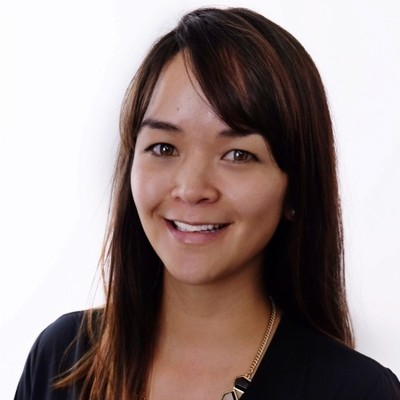
Jaime Lee
Head of Content Strategy at AdRoll
Jaime is Head of Content Strategy at AdRoll. She works with a rockstar team of creative content producers and distributors to develop compelling stories on informative topics that help brands accelerate growth. An avid tennis player and Vesper Martini enthusiast, Jaime spends most of her spare time being the #1 dog mom to her chiweenie

Laci Long
Laci is the founder of Book Pairings and also an experienced web and digital marketing manager. When she’s not reading you can find her exploring the city looking for street art to photograph and coffee or wine to consume.
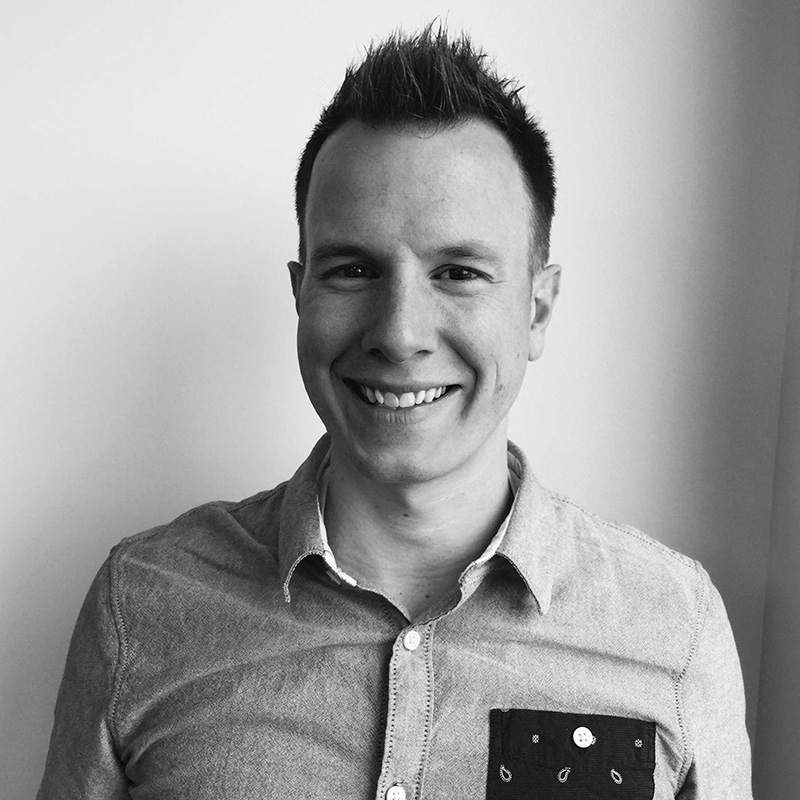
Rob Odell
SALT was founded in 2016 by a group of Bitcoin enthusiasts who aimed to prove that people didn’t need to compromise their lifestyle or forego their needs in order to pursue a long term outlook on cryptocurrency. With SALT, individuals and businesses can secure a fiat or stablecoin loan without having to worry about credit checks.
Resources
- Content Marketing: 9 Steps to Create a Killer Strategy [AdRoll Blog]
Transcript
This is Unrolling E-Commerce. On today's episode: How Ambitious Brands Do Content Marketing.
SALT: A lot of our early marketing was blog posts and education around that. Conferences were really big in crypto early on because there's not really a ban, you can only ban conferences. Also just thinking through platforms that are actually crypto-friendly, like we relied heavily on onn telegram. Traditional media like, really works against crypto companies as well because they'ren very pro-Wall Street.
AdRoll: What does the customer lifecycle look like? What are the specific pain points across that entire life cycle from the inbound all the way to retention and advocates of your brand? They're all on a journey and they're all at different stages of their journey. And so from a content perspective, we really need to understand how that's defined within our organization and what those challenges are that customers are facing, and then math that to the pieces of content that we're creating.
AdRoll: This is a special season finale episode of Unrolling E-Commerce in collaboration with INBOUND conference 2020. The INBOUND conference is a community of people who are passionate about marketing, selling, and delighting customers in an inbound way. According to a report by HubSpot nearly 70% of businesses are investing in even more content production this year. Research shows brands that execute a documented content marketing strategy feel significantly less challenged when it comes to content marketing. They also consider themselves more effective and command a higher percentage of their marketing budget. There is no one-size-fits-all strategy, but in today's episode, we'll hear from some ambitious brands, agencies, and marketers on how they're approaching content marketing. We’ll dive not only into the development of content, but how brands are strategically thinking about distribution, and seeking opportunities to nurture community through content engagement. First up is SALT, a company that builds not only crypto-backed lending technology but also scalable, institutional-grade crypto custody and blockchain monitoring products. In an emerging industry of non-traditional finance, how do you create content that builds trust with your customers and where do you host that content for a community that prioritizes privacy? Co-founder and CPO Rob Odell, and Director of Marketing and Communications Kendra Stagss chattered about how they married their content strategy to PR, events, and community to breakthrough in a challenging market.
SALT: We absolutely wrote as much as we could on a blog post. We use the early email service that was just like a normal email service that you would expect people to be able to use to like, send emails to our customers and they gave us 14 days notice that we had to cease all use of their platform because we are a crypto company and they didn't want to get involved with us. And it's just like, what?! These are notifications that your loan is in trouble or an update on the company. Like we're not selling anything through this and they still canceled our service and you had to go basically to build our own email service that ran through Amazon. It was just templates. Now that I'm talking about it, it’s crazy that we still exist. We've done a lot of learning about the communities and what they value, and projecting that back to them. So examples would be like conferences were really big and crypto early on because there's not really a ban, you can't really ban conferences. And so, a lot of it was like hand-to-hand, face-to-face, continuously showing up at different conferences and improving that you're, you know, you're doing the work to build a product that would be valuable for them. But also just being there to answer questions whenever people had questions and so a lot of our early marketing was blog posts and education around that, and sponsoring events and things that we thought would bring value to that community. And a big one has been the Bitcoin community. We've you know, as a lot of us have been made aware or come to work in the space because of Bitcoin we contribute a lot of time and effort to like Bitcoin Magazine events. We've sponsored conferences in San Francisco and Miami and New York and you know, trying to get people on panels as much as possible. We actually worked with a PR agency that was crypto-specific. We definitely went through the full gamut of hiring contractors that did not work as well. Like we hired a firm to do research. This was something that I was totally against but we hired a firm, up in a previous regime, to go do research on different crypto communities. That would be your receptive to this and the results they came back with whether exactly what we already knew and we try to create a marketing campaign around that, with their advice and guidance and it fell completely flat because they didn't understand like, any of the communities. They didn't really get what drove these people to take out loans and what the service was really providing to them, and what crypto means to them. So, we kind of went back to the drawing board a little bit but with a little bit more knowledge each timand that's kind of how we've learned is just we try something. We try something that would maybe work in a traditional sense. You know, I have a background in basically AdWords, Google ads, at an internet advertising company that had worked at previously, and kind of helped get off the ground. And so I had some knowledge of like how all that stuff works and really the biggest thing that's worked for us is been having a really good ads team and just be willing to continuously like have all these different experiments and get creative with how we market our company, whether that's like, recently as this past Monday we sponsored a a live, 21 four Livestream event, where our logo is like therefore the, you know, the predominant amount of the event and we had a marketing code that was associated with that. So we're still experimenting. We're still trying to learn what works best, but it's definitely been a lot of experiments trying to think of different ways. We can get our name out there for sure. Kendra Staggs: Also just thinking through platforms that are actually crypto-friendly. Like relied heavily on telegram making sure that people who we knew were interested in crypto like that joined out telegram community, and they provide updates to them that way then also just ads on browsers like Brave that are heavily privacy focused and then also crypto media which is kind of challenging and itself because they're not as strong, from like an ethical reporting standpoint. Like, they don't fact-check as much or anything and they'll kind of just write whatever they feel like they want to say, but using those outlets to because it's kind of like, at the very least at least they understand crypto and they're not against it because that's another thing is like traditional media really works against crypto companies as well because they're very pro-Wall Street. Rob Odell: Yeah, that's, the channel's the early, I always forget about those, but early on like there was Slack channels that were you know, you got invited to basically and that's how we got people information early on was just through like Slack channels and slacking with people, and that's kind of Slack it taken off at the same time and then we moved over to telegram because of the telegrams focus on privacy and that sort of thing so we have followed some of the trends in the space to be able to like just get information out there about the company in general and answer questions and have an open dialogue with people. We've really tried to maintain that to a certain degree obviously as we get more legal and compliance in place, they want us to engage less and less.
AdRoll: From crypto to catch.co. Catch is also under the umbrella of finance but in the form of a personal benefits platform. They provide benefits to those without benefits. Tax withholding, health insurance, savings, you name it. We asked co-founder and CEO Kristen Anderson what content she would have focused on for 2020 if she had insights into what was to come this year.
Catch: In terms of our users I think we would have tried to help prepare educational content a little bit earlier.We didn't pull together a lot of that content until we were like at home and you know PPP was a thing and all of that stuff happened. That's when we started to pull together content and I think if I had known at the beginning of 2020 we really would have focused on like bringing together really rich and helpful content early, and making sure that our go-to-market, you know reflected that people weren't going to be outside of their home. So those are the big things.
AdRoll: Adam Lasky is the Director of Marketing at TeePublic, a platformfor custom apparel and designs. The company has a community of hundreds of thousands of artists and millions of designs and illustrations, which makes for some captivating content.
TeePublic: It's now the couple of hundred thousands of artists that we have on-site that sells through us. And yeah in terms of like what they sell I mean, yeah, it starts, you know, basically with a t-shirt hence the name TeePublic, but there's a range of canvases that they can sell on - phone cases, mugs, things like that. We have a couple of million different pieces of content. I mean, you know, and if we take into account all the different variations, I mean, it's hundreds of millions. And so yeah, we're able to use that content library. We organize it and we showcase it in social, Google Shopping, and organic search. I mean that's very much one of the, our driver is the content depth and breadth that we have and so we're able to you know, showcase that content on all of those digital channels to our customers and to you know, potential customers. But yeah, the real selling point is the commission's that artists make from selling their artwork. It's been a real driver for us. It's one of our core messages of who we are as supporting independent artists. And so that is like real money in their pockets and it's just again, it just perpetuates our drive to support them even more.
AdRoll: More brands are tapping into the emerging medium of live video shopping, in an attempt to create interactive shopping experiences. It can really pay off, in 2019 businesses on average were making $5.20 for every $1 spent on influencer marketing. And in some cases seeing conversion rates x10 better than traditional ecommerce sites. Laci long is the creator of Book Pairings. She matches great reads with good drinks, which has resulted in 50,000 followers, a community of passionate readers, and some very lucrative partnerships with publishers. She chatted with us about the various categories of influences and industry trends during covid-19.
Book Pairings: Just chatting with some of the other people that I'm friends within the influencer category, a lot of people are discounting by like 20% or more just to you know, maintain income at this point, and also to help brands that might be struggling. Micro influence our tends to be like, it's very nuanced, but like the cutoff tends to be 10K or fewer. In terms of the number of followers. These tend to be like real people quote unquote ‘real people’ that have a good eye for photography and have like a loyal following that super engaged. They can be super effective when it comes to running an influencer campaign. The only drawback here is that they have a cap on their audience, but you're going to get like highly engaged users, engaging with those influencers at a much lower rate because the influence have fewer followers so you can get a better rate and then there's another term that starting to gain popularity which is called the Macro Influencer. And these are like the super mega influencers that have like a million-plus followers. Obviously, there are a bunch of people that fall in between the 10K and 1 million mark. I guess that's just a generic influencer, but those like macro-influencers are going to be looking for like big brand partnerships like Kylie Jenner was a good example of one of those where she gets paid an obscene amount of money for one post. But the that in-between bracket, they tend to also have like high engagement when I would say if you're a brand trying to vet an influencer try to get a good idea of are people engaging with that user consistently, and ask for their engagement rate. They have that data and Instagram generally speaking like in terms of pricing for a type of partnership here. It's going to be about $10 per 1,000 followers. But sometimes you can get deals if you start talking about more long-term, like multi-post campaigns.
AdRoll: And what have you thinking about paying an influencer? What are the best platforms to target? And what kind of engagement rates are we seeing during COVID and lockdown?
Book Pairings: Instagram, YouTube, Pinterest, and TikTok seem to be like the darlings right now. Everyone's spending a lot more time on those platforms. It doesn't make sense for every brand, but it's definitely, those are the areas I would start with. I think it's an all-time high across almost every platform at this point in terms of people being on the app, like screen time is up by like 5 plus hours a day right now, which makes sense people have more free time. The engagement rates are much higher right now. Like I'd say my engagement rates have increased by like 30% since all of this started which is amazing. It means people are really engaged and trying to find ways to connect when they can't go out and see friends or whatever. It might be or maybe they can't do their book club anymore. Whatever in terms of content Trends, you're seeing a lot more content around at-home activities. So like baking, recipes, ideas for keeping your kids busy, anything around like self-care, mental health. Like how do you stay sane in all of this? Like how can you know continue to workout at home or continue to eat healthy while you're at home, whatever it might be? There's a lot around skills development, whether that's professionally or your hobby. So like, there's like trends around home making and gardening like, people have more time to do that right now, or maybe people want to learn a new language, things like that are really popular at the moment. Brands are trying to do good in their communities and doing it in a way that doesn't feel like it's for gain is really important. It's important to acknowledge what's happening. You can't just continue business as usual. You're going to have to adapt your message. That being said, I think the whole like ‘these are trying times’ blah blah blah is old for people so finding ways to like authentically acknowledge what's going on and then try to provide value whether it's like, with a service or just like a giveback campaign. The brands that are trying to find ways to support their community or the ones that people are engaging with the most right now,after this is all over those brands that have been working on those types of messages and who continue to do it after this, are the ones that are going to have a big boom. People are really thinking about community and connection right now. So just trying to play into that and just be as authentic as possible. Those are the trends in messaging that I think are going to have the biggest impact and continued at the biggest impact.
AdRoll: According to E-Marketer, 60% of marketers create at least one piece of content a day, and there are plenty of content forms to contend with. Emails, blogs, listicles, workshops, playlists, videos, live streams, and of course, podcasts. The list does go on. Renee Kristensen from Leon and George, a brand that supplies indoor plants with a white-glove service, explains how she streamlined the company's content experience.
Leon and George: In the past. We have done a lot of different types of workshops. We did a really fun lecture series, which we called ‘The Not So Secret Life of Plants’ where we brought a PhD candidate down from UCDavis and she gave lectures on different topics around plant life that was super interesting and fun Nowadays we're doing a lot of yeah online communications, one of the series we do also is a plan care tip every Sunday. It seems so simple but it's by far one of our most popular content pieces and people, a lot of our customers have come to kind of expect that. Every Sunday morning they get a little plant care tip in their inbox, which we also share on social and its kind of turned, you know Sundays for our community and to like plant care days and kind of self-care because plant care is so intrinsically related to taking care of ourselves. So I think in that sense, it's been super powerful. I mean one area that I I touch on a lot is the blog and when I first started that was kind of just an area where randomly someone would drop some content in and forget about it and you know month later someone else would go in and add something else. So it was kind of like a hodgepodge of information and that's been a really fun project for me is kind of growing that into more a more like a streamlined experience of our brand, so it's not just about plants. It's also about like interiors and we hope to like educate and inspire through that, and one thing we started with was a new email series that kind of highlights stories from our blog and so it's been nice to kind of you know, plants can be so much when you let me try to talk about them so much about like kind of, you know, like education, how to care for them. But there's actually so much more like plant styling and kind of being inspired by like interior spaces with indoor plants and that's something that's been very successful with our audience.
AdRoll: There are three main categories of social media consumer personality to consider when creating content during a crisis (such as a pandemic). We have The Activists, the group of people who took to social to share information, educate, and discuss. Then there's The Curators. They saw a lockdown as an opportunity for self-improvement. And then we have The Escapists, those who use content for escapism and to reminisce over what they miss. Of course, all of these categories were part of a trend with a somewhat predictable ending - burnout and disengagement. Lauren Fairbanks is the co-founder and CEO of Stunts and Gimmicks, an award-winning content marketing agency that creates branded content experiences for companies. She shared her experience and advice with content burnout.
S&G: From the agency perspective, you know, we work with both B2B and B2C clients, so really across the board, we've seen kind of, we saw this huge increase in engagement with online platforms whether that be a blog post, webinars, whitepapers, ebooks that were helping people kind of navigate this new normal both from a personal perspective. So how to kind of stay sane, how to create this new work environment, but also from you know, helps you be more effective, how to make sure that you're hitting your deadlines, how to make sure that you're still building culture with your employees and your team members, and that was really kind of a remark in equal. And I think now we've seen a pretty massive slide into people just disengaging and I think a lot of that is due to the fact that people really are burnt out, you know, it started with the pandemic and then there have been a lot of other, you know, a lot of other events that have kind of compounded this issue and just made you know, just kind of this overwhelming amounts of information all of these events are important and critical and are really, they're taking a lot of mind space from people. So people just don't have the brain space to really think about work or personalized and people are just feeling like they can't kind of handle anything else. And then I think that's also compounded by the fact that now people's vacation schedules and time all schedules are also being affected by this. So there's kind of this extra level of you know, they were anticipating for a long time being able to get out and go on vacation or visit family and now that A lot of these plans are being canceled or being dramatically alter her that's at kind of adding this additional layer of you know, like what are we going to do now? So it's just really it's pushing people to kind of disengage even further. A lot of what brands really need to do right now is pay attention and listen because I think one thing that we've really learned by talking to our friends and family through this is that everyone kind of goes through these stages of dealing with crisis differently, and I think that that's kind of evident when we're doing Talk about the like the three different sort of like crisis personalities, but it's really really critical for brands to look at what how their customers are responding to the brand communications responding to their social codes responding to their emails or blog post and really see like are we putting out the right kind of content and is it resonating well, and if it's not what kind of content do you need to create in order to meet your customers and your audience where they are and their own? Small Journey dealing with this kind of enhanced state of Crisis. Now. It's really kind of hard to moderate every touch point that we have digitally like online meetings have increased 16% for some people we're constantly like I don't know about anyone else but I constantly feel the need to check in on, you know, my sister and my parents and it just feels like a lot of work. It just feels like more mental work that I have to perform at the end of the day. So I do think that a lot of people are looking to be less than boarded by messaging online. And whether that's from brands whether it's from friends, but I do think one thing that people are actually really looking for is this kind of build up in anticipation. I think that's one thing the pandemic is kind of stolen from us that you know, before this whole pandemic happened we think about like, ‘oh, we've got a big, you know event coming up at work, or to conference and I'm really looking forward to that’. So for like the next four to six weeks, I'm going to plan and going to like look at my travel and going to get excited about it. That's all kind of just disappear. Overnight and so I think one way to brands can kind of help consumers feel a little happier and a little more confident is by lowering the number of communications like slowing down the keenness of communications that may be creating these kinds of events and campaigns that are bigger and that build up over time. So that consumers have something that's more exciting to look forward to it's building up anticipation for something that's not for and related. It's not work-related. It's an opportunity to kind of decompress. Impressed, it's fun. It's relaxing but it just gives you something to look forward to.
AdRoll: Content mapping is an effective way to deliver the right content to the right people at the right time and ensure that the company's content is effective at generating a nurturing leads. Here's Jamie Lee the Heaad of Content Strategy AdRoll.
AdRoll When we started I started down this path of really napping content to the life cycle, but I think that we kind of took a step back and we When a little bit little bit deeper or actually we took a level up and when a little bit more superficial versus going down which I think we're now getting to that point of drilling down a little bit more into directly mapping the pieces of content that we're creating to the lifecycle. We still have a ways to go around that but when I've executed on stuff like this before it's really an alignment across the organization of what does the customer lifecycle look Like what are the specific pain points across that entire lifecycle from the inbound all the way to retention and Advocates of your brand. They're all on a journey and they're all at different stages of their journey. And so from a content perspective, we really need to understand how that's defined within our organization and what those clear pain points and challenges are that customers are facing and then map that to the pieces of content that we're creating and it could be Varying formats but with each asset there is a specific question that is answered with that piece of content. So how do I build a social media strategy we can have a blog post on that we could do a webinar on it. We could create all these different assets but it really comes down to matching. The the question that a customer is asking to content that helps answer that question. I think it's really important to have equal parts production and distribution and look at it holistically as it maps to your Bigger vision and your strategy, I think a lot of companies focus on the production side. Like we need this now and it and then too much of that can start to feel reactive and like you have lost control of your content strategy and it's important to pull that back in and think of each piece that you produce as something that can stand alone or it can be part of a bigger web and what you can do to get that out there< because you can create this content and not necessarily everyone will see it you have to really assess your distribution strategy and all the channels that you have identify. What each channel is good for and how to optimize against them and then you look at what you are producing and how you marry the two between the production side and the distribution side and how that relates to the broader lifecycle and being able to answer questions for your customers the the the questions that they're asking and and it's part of this holistic view. So it's less of just focusing on reactive like the sales team might say we need this right now, but it's more how does that one piece of content or all of the pain points that you're addressing map to a broader vision and strategy.
AdRoll: Thank you to SALT, Catch, TeePublic, Stunts & Gimmicks, Book pairings, Leon and George, and Jamie Lee for featuring in this episode. Information and links to all of our guests and companies can be found in the show notes. If you're looking for Community or maybe learning resources such as webinars blogs ebooks, make sure you're heading to adroll.com/resources. We're also on social look for AdRoll on Facebook, LinkedIn, Instagram, Twitter, and now on TikTok.
